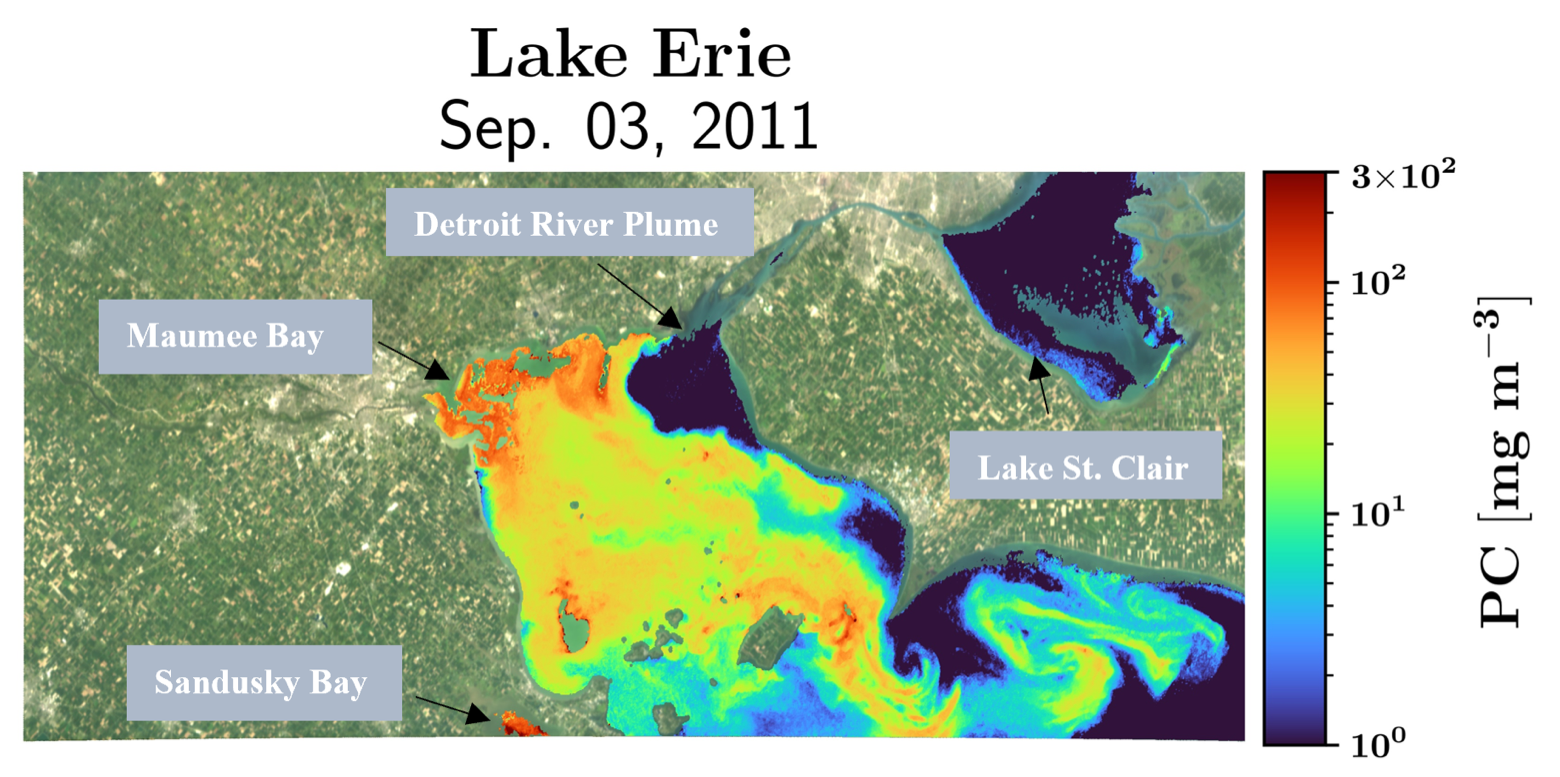News
SSAIHQ CMS Display Portlet
SSAI In The News
Breadcrumb
SSAI's Freshwater Sensing Team Maps Phycocyanin in Algae Blooms
In honor of World Water Day, today we're spotlighting SSAI's Freshwater Sensing Team and their work mapping phycocyanin in algae blooms.
Phytoplankton is the primary source of food in water and its adequate presence is vital to the health and aesthetic conditions of aquatic ecosystems like lakes, reservoirs, and rivers. Under certain conditions, however, such as high temperatures, increased nutrient loads, and elevated winds, phytoplankton tend to excessively grow in abundance, giving rise to Harmful Algal Blooms (HABs), which often come with an unpleasant odor and can produce toxins detrimental to human health, wildlife, and the ecosystem, with irreversible economic effects.
SSAI's Ryan O'Shea, along with SSAI colleagues Nima Pahlevan and Brandon Smith, has been looking at new techniques to use the enhanced spectral capabilities of the new generation of NASA satellite sensor, PACE Ocean Color Instrument (OCI), to improve monitoring and studying of cyanobacteria HABs (CyanoHABs) and contribute to a better understanding of the key drivers of CyanoHABs, as well as the biological and physical mechanisms behind their inception, evolution, and dissipation across large freshwaters and coastal estuaries.

Learn more here: Advancing cyanobacteria biomass estimation from hyperspectral observations: Demonstrations with HICO and PRISMA imagery - ScienceDirect
Hats off to all SSAI's scientists contributing to ways to understand and protect our planet's most precious resource!

